Billet Bicycle Wheel Q235,Q255,Q275,Q345,3SP,5SP,20MnSi
- Loading Port:
- China main port
- Payment Terms:
- TT OR LC
- Min Order Qty:
- 20 m.t.
- Supply Capability:
- 200000 m.t./month
OKorder Service Pledge
OKorder Financial Service
You Might Also Like
Billet Bicycle Wheel Q235,Q255,Q275,Q345,3SP,5SP,20MnSi
Specification
Steel billet(ingot) by cogging or breakdown of semi-finished products, is the raw material of all kinds of steel mill. Billet section of square, round, flat, rectangular and abnormity of several kinds of, mainly related to the shape of rolled products.
CNBM Q235,Q275,Q345,3SP,5SP,20MnSi Billets Steel
Hot Rolled Steel Billets/ Mild Steel Bar/ Billet Steel
Specification (see below)
Standard: GB/JIS/ASTM
Size: 50*50mm-180*180mm
Length: 3-12mtrs or Customised
Steel material: Q235,Q255,Q275,Q345,3SP,5SP,20MnSi
Technique: Hot rolled
FOB Unit Ton Price $250-350 and Usually I will quote you CFR price.
MOQ: Usually 1000-10000MT/size
Shipment:By Container,Bulk Vessel
Packaging Details: bundles with steel strips or as customers's requirements
Delivery time: Usually within 30 days after the deposit/LC
Inspection:Third party inspection before loading.
Technical data
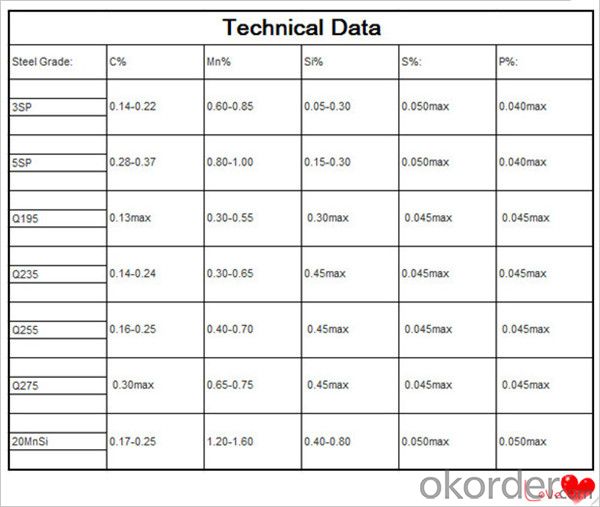
Feature Steel Billet
Rectangular billet continuous casting billet and mainly general carbon steel, low carbon low silicon cold-rolled material, high quality carbon structural steel, high strength low alloy steel, special steel, etc.
The billet is mainly divided into two kinds from the shape:
Slab: cross section width and height of the ratio of the larger, mainly used for rolling plate.
Billet: equal cross section width and height, or a huge difference, mainly used for rolling steel, wire rod. ,
Steel billets have distinct characteristics as compared with already furnished steel bars and products. Billets have a specific grain structure, which enables the metal to be processed more intricately. Steel billets are also known for their malleability and ductility, especially when exposed to varying temperatures during shaping and molding.
Packaging & Shipping
1. Packaging:
1) Small size: in bundles
2)Big size: in bulk
3)in plastic packing or as per customer requirement
2. Delivery time:
1) Normal size: within 7days send from warehouse directly
2) Special size: with 25-30days customer made for you
3. Trade terms:FOB/CFR/CIF
4. Shippment:
1) length:≤5.8m loaded in 20FT Container with 25-27tons
2) length:≤11.8m loaded in 40FT Container with 25-27tons
3) lengnth:≥12m shipped by bulk vessel, FILO terms
Steel Billet Images
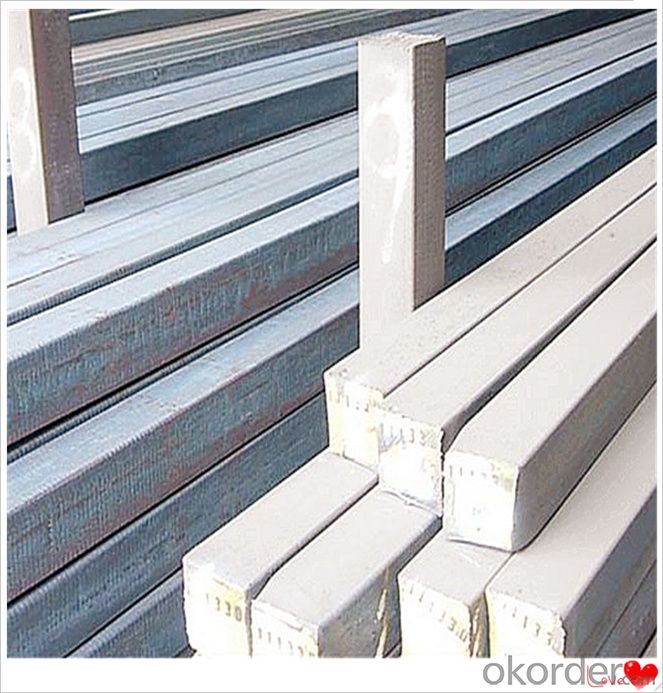
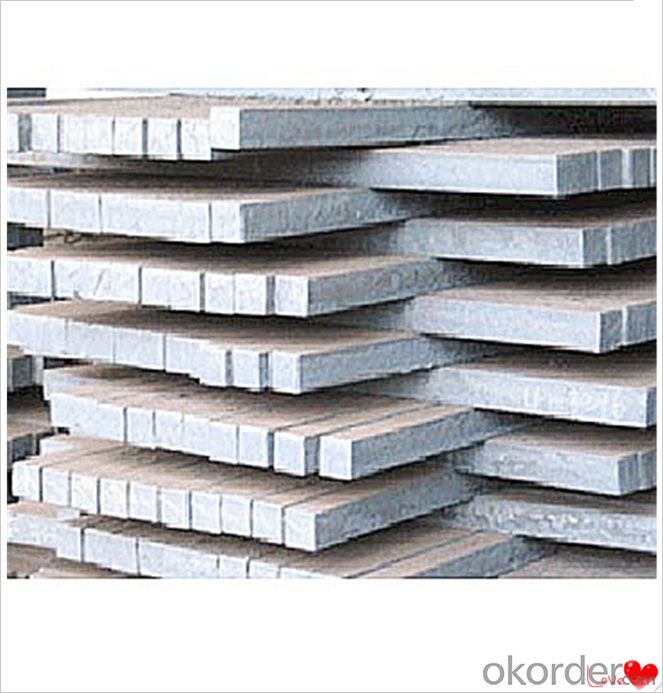
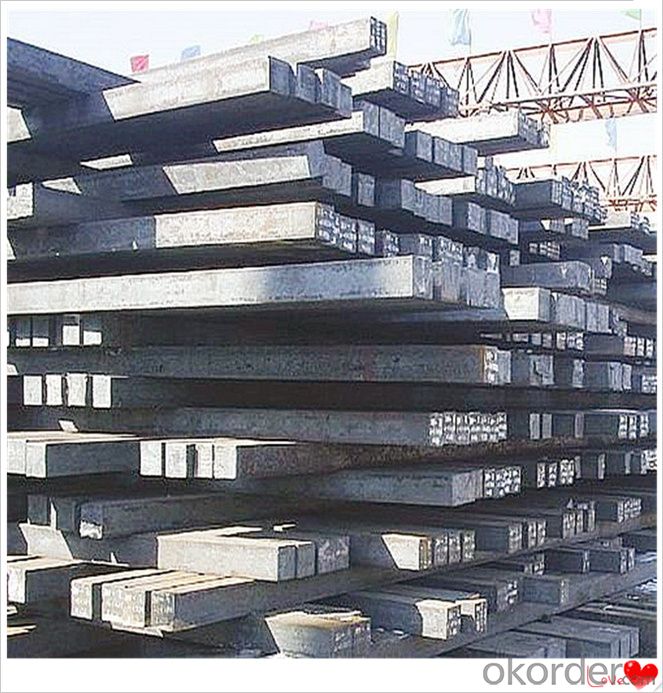

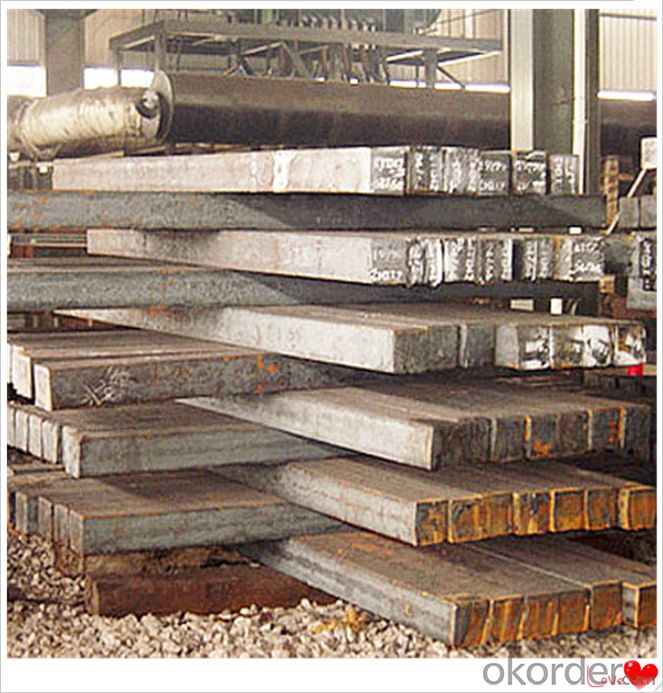
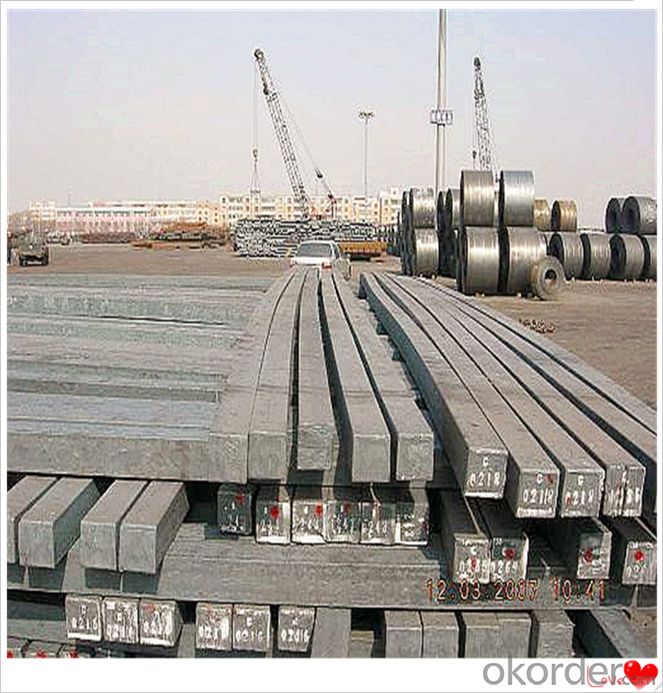
Processing
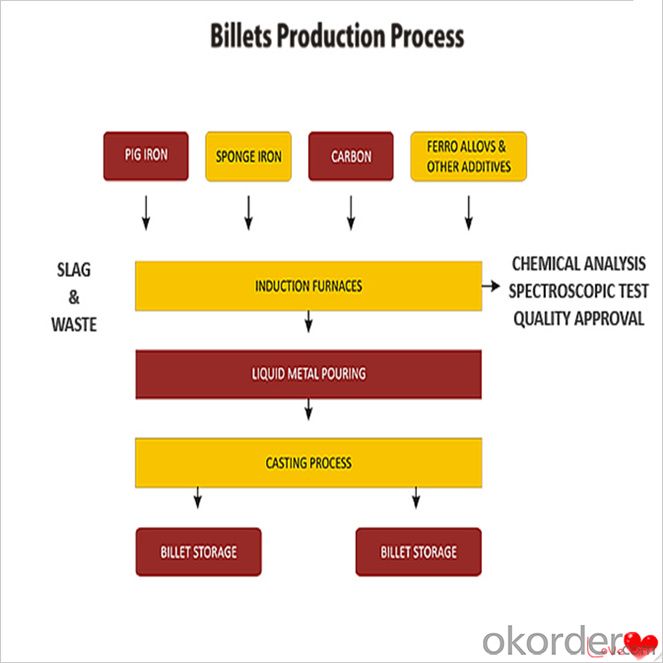
Usage-Billet Steel
Used for the plant, the bridge,shipment building high-rise building construction,lifting and transportation machinery, equipment manufracturing base building the support foundation pile manufacturing.
Billets, or ingots (as they sometimes referred to), are not of practical use until they have been formed into more functional shapes and sizes. While they have already been put in the furnace, they still require a series of shaping and molding procedures such as hot and cold working, milling and cutting before they are sold in hardware stores, or used for different applications. The unformed billets, however, can be used in striking currency such as coins and as reserves, similar to gold bars.
FAQ-Billet Steel
We have organized several common questions for our clients,may help you sincerely:
1) How about your company?
A world class manufacturer & supplier of castings forging in carbon steel and alloy steel,is one of the large-scale professional investment casting production bases in China,consisting of both casting foundry forging and machining factory. Annually more than 8000 tons Precision casting and forging parts are exported to markets in Europe,America and Japan. OEM casting and forging service available according to customer’s requirements.
2) How to guarantee the quality of the products?
We have established the international advanced quality management system,every link from raw material to final product we have strict quality test;We resolutely put an end to unqualified products flowing into the market. At the same time, we will provide necessary follow-up service assurance.
3) How long can we receive the product after purchase?
In the purchase of product within three working days, We will arrange the factory delivery as soon as possible. The pecific time of receiving is related to the state and position of customers.Commonly 7 to 10 working days can be served.
4)Do you have your own QC department?
Yes, we have, our QC department will inspect the goods during the process of mass production and after completion of production.
hot sale!!! Cast Steel Grades/ mild steel bar/ billet steel
(1): High quality steel with reasonable price.
(2): Wide excellent experiences with after-sale service.
(3): Every process will be checked by responsible QC which insures every product's quality.
(4): Professional packing teams which keep every packing safely.
(5): Trial order can be done in one week.
(6): Samples can be provided as your requirements.
- Q:20 what is the difference between manganese silicon steel billet and Q235 billet?
- 20 manganese silicon steel billet for high strength steel,Q235 billet is almost the most common steel, requiring the lowest.
- Q:Use medium frequency furnace (1 million 500 thousand volt ampere) to produce 1 ton cast steel blank, how much kilowatt hour is consumed?
- This depends on the intermediate frequency furnace voltage level and inverter efficiency, the general high voltage will save power, generally 550-700 range, details can refer to wcdlsb site medium frequency furnace data
- Q:What are the different methods of steel billet surface treatment?
- There are several methods of steel billet surface treatment, including pickling, shot blasting, grinding, and coating. Pickling involves immersing the billet in an acid solution to remove impurities and create a clean surface. Shot blasting uses high-speed particles to remove rust and mill scale from the surface. Grinding is a mechanical process that smoothens the surface through abrasion. Coating is another method where a protective layer is applied to prevent corrosion and enhance the appearance of the billet.
- Q:What are the main factors affecting the machinability of stainless steel billets?
- The main factors affecting the machinability of stainless steel billets include the composition and microstructure of the steel, the hardness and work hardening characteristics, the cutting tool material and geometry, the cutting parameters such as cutting speed, feed rate, and depth of cut, and the cooling and lubrication methods used during machining.
- Q:What is the role of steel billets in the manufacturing of automotive transmission systems?
- The manufacturing of automotive transmission systems heavily relies on steel billets, which serve as essential raw material forms of steel. These billets act as the foundation for shaping and forming various components of the transmission system. The production of gears, shafts, and other critical transmission components is one of the primary purposes of steel billets in the manufacturing process. These billets are either forged or machined to achieve the desired shape, strength, and dimensional accuracy necessary for these components. By utilizing steel billets, manufacturers ensure that these parts possess the required strength, durability, and resistance to wear and tear, which are crucial for the proper functioning of the transmission system. Additionally, steel billets also find application in the manufacturing of transmission casings. These casings serve as protective housing for the internal components of the transmission system. To create these casings, steel billets are cast or molded into the desired shape, guaranteeing that they possess the necessary strength and rigidity to withstand the forces and stresses experienced by the transmission system. Furthermore, the use of steel billets allows for the customization and optimization of transmission system components. Manufacturers have the freedom to select specific grades of steel billets based on their desired properties, such as hardness, toughness, or corrosion resistance. This flexibility enables the production of transmission systems that meet the specific requirements of different automotive applications, whether it involves high-performance vehicles or heavy-duty trucks. In conclusion, steel billets play a vital role in the manufacturing of automotive transmission systems. They provide the raw material needed to create gears, shafts, casings, and other components. Steel billets ensure the strength, durability, and customization potential necessary to produce reliable and efficient transmission systems for various automotive applications.
- Q:What are the properties of alloy steel billets?
- Alloy steel billets possess a combination of properties that make them highly desirable for various applications. These properties include high strength, excellent hardness and wear resistance, good toughness, and improved corrosion resistance compared to carbon steel. Additionally, alloy steel billets have the ability to withstand high temperatures and exhibit excellent machinability, making them ideal for use in industries such as automotive, aerospace, construction, and manufacturing.
- Q:What is the active carbon. What is the difference with the charcoal?
- This decision of the activated carbon has Good adsorption of metal ions, adsorption, wastewater and waste gas in the harmful gases, organic pollutants, such as pigment. Application of activated carbon also requires high mechanical strength, good abrasion resistance, its structure to stabilize, adsorption energy required, to facilitate the regeneration. The active carbon used for oil, beverage, food, drinking water, decolorization, deodorization, gas separation, solvent recovery and air conditioning, adsorbent is used as a catalyst carrier and a gas mask. Charcoal is made from trees and dry, is a kind of fuel. Soil general burn charcoal, is placed in a kiln inner wood, after the ignition, when he arrived a certain temperature, closed kiln inlet, let the heat get distillation of wood and charcoal. To serve the people of Zhang Side is burning charcoal, charcoal kiln collapsed when.1 died
- Q:Can steel billets be used in the manufacturing of machinery?
- Yes, steel billets can be used in the manufacturing of machinery. Steel billets are semi-finished metal products that are typically hot rolled or forged into various shapes, including bars, rods, or sheets. These billets serve as the raw material for manufacturing machinery components such as gears, shafts, bearings, and structural frames. The use of steel billets in machinery manufacturing offers several advantages. Steel is known for its exceptional strength, durability, and resistance to wear, making it a suitable material choice for heavy-duty applications. Additionally, steel can be easily machined, welded, and formed into complex shapes, allowing for the production of intricate machinery parts. Moreover, steel's high melting point and thermal conductivity make it ideal for applications that involve high temperatures or require heat transfer. Overall, steel billets are widely used in machinery manufacturing due to their excellent mechanical properties, versatility, and reliability.
- Q:How are steel billets used in the production of gear blanks?
- Gear blanks are made from steel billets, which are essential for their production. Steel billets are long bars of steel that possess the necessary characteristics for gear manufacturing. These billets are made from high-quality steel and provide the material needed for creating gear blanks. To shape the gear blanks, the steel billets are heated to a specific temperature, making them easier to work with. Various forming processes, such as forging or extrusion, are then used to transform the billets into the desired shape of the gear blank. Once the gear blank is formed, it undergoes further machining processes to refine its shape, dimensions, and surface finish. This includes turning, milling, drilling, or grinding operations. Precise machining is necessary to meet the required specifications for the final gear product. The gear blanks produced from steel billets are the foundation for creating different types of gears, including spur gears, helical gears, bevel gears, or worm gears. These gear blanks undergo additional steps, such as heat treatment and surface hardening, to enhance their mechanical properties and increase their resistance to wear and fatigue. In conclusion, steel billets are crucial in the production of gear blanks as they provide the raw material for creating gears. Through heating, forming, and machining processes, the steel billets are transformed into gear blanks, which are then further processed to create the final gears used in various applications.
- Q:What are the main factors affecting the cost of steel billets?
- The cost of steel billets can be influenced by several key factors. 1. Raw material expenses play a significant role in determining the overall cost of steel billets. The prices of iron ore and scrap metal, which are used in the production process, can fluctuate in the global market, causing the cost of steel billets to rise or fall. 2. The cost of manufacturing steel billets includes various production and processing costs. These expenses, such as energy, labor, and maintenance costs, can vary depending on factors like production efficiency, skilled labor availability, and energy source prices. 3. The balance between supply and demand in the steel billet market can heavily impact their cost. If there is high demand and limited supply, prices can increase. Conversely, if there is excess supply and low demand, prices can decrease. 4. The level of competition among steel producers can also affect the cost of steel billets. In a competitive market, prices may be driven down as producers vie for customers. In a less competitive market, producers may have more pricing power, leading to higher prices. 5. Government policies and trade barriers, such as import tariffs and quotas, can influence the cost of steel billets. These measures can either protect domestic producers or create opportunities for cheaper imports, depending on specific policies in place. 6. Fluctuations in currency exchange rates can impact the cost of steel billets. A stronger domestic currency can make imported steel billets cheaper, while a weaker currency can make them more expensive. 7. The cost of transporting steel billets from production facilities to end-users can also affect their overall cost. Factors like distance, transportation mode, and fuel prices can impact transportation expenses, which can, in turn, affect the final price of steel billets. It is important to consider that these factors can interact with each other and their impact on the cost of steel billets can vary based on market conditions and industry dynamics.
1. Manufacturer Overview |
|
|---|---|
| Location | |
| Year Established | |
| Annual Output Value | |
| Main Markets | |
| Company Certifications | |
2. Manufacturer Certificates |
|
|---|---|
| a) Certification Name | |
| Range | |
| Reference | |
| Validity Period | |
3. Manufacturer Capability |
|
|---|---|
| a)Trade Capacity | |
| Nearest Port | |
| Export Percentage | |
| No.of Employees in Trade Department | |
| Language Spoken: | |
| b)Factory Information | |
| Factory Size: | |
| No. of Production Lines | |
| Contract Manufacturing | |
| Product Price Range | |
Send your message to us
Billet Bicycle Wheel Q235,Q255,Q275,Q345,3SP,5SP,20MnSi
- Loading Port:
- China main port
- Payment Terms:
- TT OR LC
- Min Order Qty:
- 20 m.t.
- Supply Capability:
- 200000 m.t./month
OKorder Service Pledge
OKorder Financial Service
Similar products
New products
Hot products
Related keywords
































